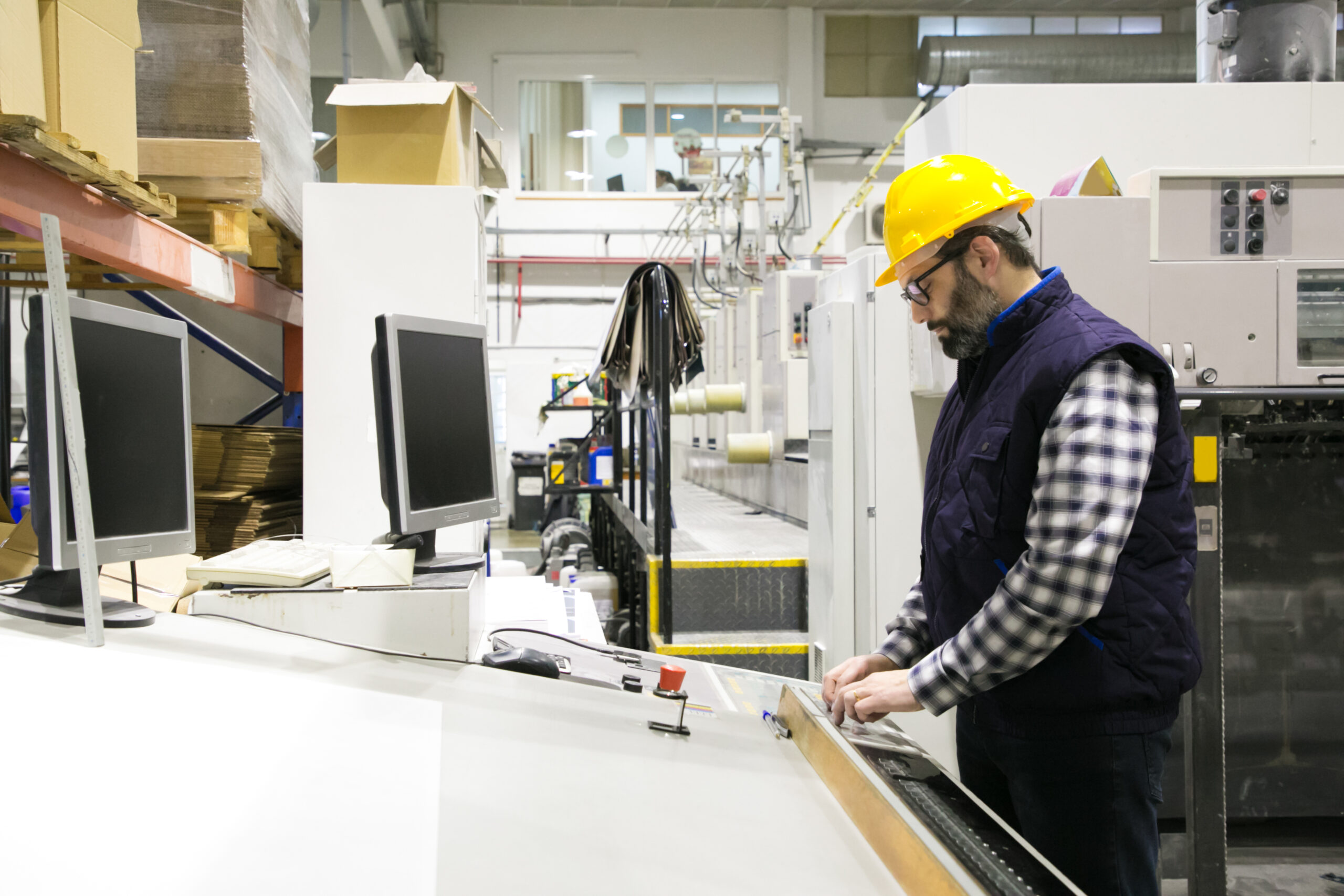Fanless PCs have gained popularity recently owing to several advantages they offer. They are designed to be installed in places originally meant to have PCs, like factories and warehouses, where the presence of fans would scatter dust and debris which may damage a typical PC. They also consume less power and produce less noise compared with regular PCs.
In this blog, we will discuss a fanless PC, its advantages, its mechanism of operation, why you need one, and its applications.
What is a Fanless PC?
A fanless PC is a machine that doesn’t use fans as a cooling agent. It uses passive cooling methods instead. That means fanless PCs are highly noiseless and silent, unlike their counterparts, which always produce noise when the fans work. The parts of a fanless PC are designed to give off less heat, while the whole design takes great care of managing how much heat is produced.
Fanless PCs are sleek, light, and optimal for employment in ecosystems that are extremely sensitive to noise such as industries. They sport shock-resistant materials and perform efficiently under tough conditions. For example, the most popular type of fanless PC is an industrial embedded box PC, which is a very specialized kind of hardware that is designed for use in places heading towards usage without requiring cooling fans.
What Are the Advantages of a Fanless PC?
A fanless PC offers numerous advantages. The following are just a few of them:
- Silent Operation: One of the reasons why a fanless computer is a desirable product is that it runs silently. The computers rarely produce noise as they do not operate through fans; hence, they are one of the best for quiet environments such as industries.
- Durability: Fanless PCs have fewer moving parts than a normal PC. This limits the possibility of mechanical failure. In addition, it minimizes dust collection, which will obviously arise and cause computers to overheat.
- Energy Efficiency: These PCs are designed to allow low power. Instead, they use low-power components, thus reducing electricity bills, especially in industries that make use of various units.
- Compact Size: Most fanless PCs are built into compact and lightweight forms for general applications. They can be installed in various settings, including the most compact tight spaces, and are well-mobile without adversely affecting the performance.
- Heat Management: These PCs employ sophisticated cooling mechanisms to keep the system within a safe operating temperature for their active parts, which not only prolongs performance but also doubles the total service life of the system.
- Reliability: They are very reliable because they are ruggedly designed. They can run correctly in highly extreme temperatures and dusty locations, making them applicable to industrial purposes.
- Cost-Effective: Though the initial cost may be higher for these PCs, durability and energy efficiency may ensure long-term savings. Fewer repairs are needed, and energy bills can be lower than those of their counterparts.
How Do Fanless PCs Work?
These PCs work under a few core principles of heat management and design. Here’s how they work:
- Passive Cooling: Since there aren’t any fans, these PCs rely on passive cooling systems. These are mostly composed of heat sinks with thermal pads that absorb heat to be dissipated by computer components. Designs maximize surface area for efficient heat transfer.
- Heat Dispersion: They are made of materials that evenly distribute heat. No single component overheats. They use aluminum and often other aluminum alloys since aluminum is a good conductor of heat, thereby aiding in heat dispersion.
- Component Selection: These PCs use parts that draw less power and generate less heat than any ordinary desktop. This in turn means they’ve got more energy-efficient processors and graphics cards that can sustain their overall cool temperature.
- Enclosure Design: The enclosures of PCs are designed to favor airflow without fans. In most models, there are vents or perforated surfaces to allow the free dissipation of heat, maintaining optimal operating temperatures.
Why Choose a Fanless PC?
A fanless PC offers many advantages for fitting different kinds of needs. Among the reasons why you may be willing to invest in one of these are:
- Noise sensitivity: It is a perfect solution for a noisy workplace: it’s a fanless PC. So, a quiet computer does not make noise. Therefore, this helps get rid of distracting noises that might prevail in the surroundings and promotes a peaceful working atmosphere for concentrating and producing more.
- Savings on Energy: These PCs are energy-efficient, which means that for firms looking to cut down on operating expenses, utility cost savings would be next in line. Such savings would add up in considerable aggregates for multi-unit operations over the long term.
- Ruggedness: In industrialized regions, machines work in somewhat rough conditions, so the design of fanless PCs should be strong and reliable. The machines are designed to be resistant to dust, extreme temperatures, and disruptions for continuous and efficient operations even in challenging environments
- Maintenance-Free: With fewer moving parts, these PCs require very little maintenance. This is beneficial for a business seeking to maximize uptime and cut down on maintenance costs.
- Space-Saving: Aesthetic Space Fanless PCs are suited in areas that are restricted in space due to their size. It does all the work in silence making it possible to place the equipment on walls or blend them into existing systems without occupying too much space.
- Environment-friendly: Computers without coolers are made of eco-friendly materials and do not require much electrical energy. Therefore, people who use technology and are also environmentalists will prefer such devices.
- Versatility: The fanless computers can be used for all applications: from digital signage to industrial automation. However, since they can be positioned for all purposes and domains, applications are appropriate for all those.
Applications of Fanless PCs
Fanless PCs have invaded nearly all world territories and are being adopted rapidly. Its applications include:
- Industrial Monitors: These PCs are mainly integrated with an industrial monitor to design high-performance automation solutions. The combination offers very robust performance for rugged environments.
- Manufacturing and Automation: These PCs are usually used for manufacturing where dust, dirt, and debris can be plentiful. They are more reliable than moving parts as they guarantee constant operation in automation systems and machinery control in the monitoring of procedures when working under harsh conditions.
- Embedded Systems: Because of compactness and reliability, these PCs have also invaded several embedded applications like robotics, machine learning. They can be fitted without bulk into a machine, thus making any system very efficient.
- Telecommunication: These PCs are preferred for telecommunication equipment wherever silent operation is the most crucial criterion. They would prove highly useful for server rooms and network operations centers to ensure that performance is reliable, with minimal noise and heat generation.
- Industrial IoT (IIoT): Fanless PCs will be crucial when industries become a hub of IoT devices as they tend to collect data and do edge analysis. Their robust design makes them perfect for installation in various industrial environments so that real-time processing and monitoring of data can be done.
- Testing and Measuring Instruments: Fanless PCs provide accurate computation of data without contamination from noise or vibration in the test setup. These are indispensable for laboratories and quality control facilities where accuracy is paramount.
- Aerospace and Defense: Here, they use fanless PCs in Aerospace and Defense flight systems, ground control, and other mission-critical applications, as their ruggedness and exceptional tolerance to extreme conditions qualify them for these high-stake applications.
- Energy Management: These PCs are applied in energy management solutions to monitor and manage energy consumption. Being stable over a wide range of temperatures, the system can work appropriately at renewable energy facilities as well as traditional power generation stations.
- Smart Grid Technology: These PCs enable smart grid applications to manage and analyze the collected data from distributed energy resources. They aid in real-time decision-making through improvement in energy network efficiency.
Conclusion
Fanless PCs provide a singularly unique and effective solution for most applications. Silent in operation, energy-efficient, and durable, they are perfect for business and industrial automation, among other applications. Knowing how these systems work and what advantages they offer will also enable you to make the best-informed decision when choosing technology suitable for your needs.
With technological advancements, these PCs will surely become more integral in our lives. A fanless PC would make a great and wise choice for an automation solution within industrial embedded box PCs or any other needs.
If you are considering fanless technology, ITG can supply you with the right solutions that work well with current operations. With our automation solutions and high-quality products, you can rest assured that you will have the performance you need to achieve the expected level of reliability.
Silent, efficient computing means that it’s time to investigate how fanless PCs can fulfill your business and industrial needs.



